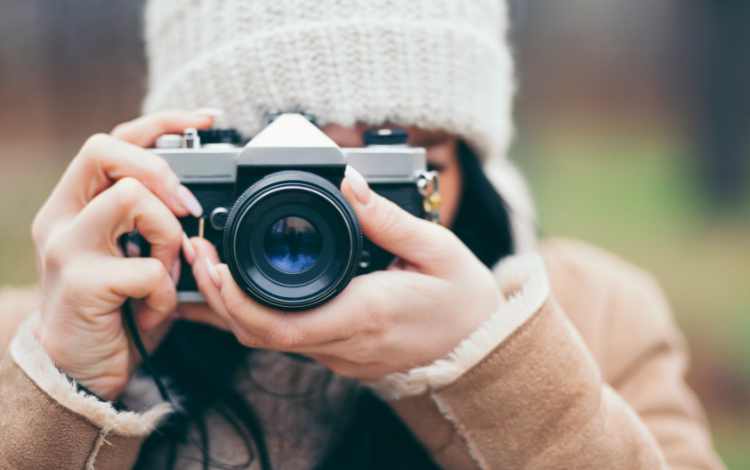
Thanks to smartphones and inexpensive DSLR cameras, it’s easier than ever to become a great photographer. That’s good news for content creators and people who want to share their snaps with friends and family. But like any artistic medium, you’ll need practice to hone your skills.
Fortunately, there are plenty of photography tricks you can use to upgrade your photos in an instant. Once you’re done, you can use one of the many ways to share images online.
A practical guide to transforming your mindset and visualizing a better life — from the inside out.
Intro Price: $9.99 » Discover the Guide
How to Share Your Images Online
If you’re already a decent photographer and you need an app for real-time picture sharing (like for weddings, anniversaries, and baby showers), try a service like Memento. With Memento, you can create shared albums with unlimited storage and a high level of privacy completely for free.
You can also share your photos or videos privately using the following:
- Facebook Groups (if you increase your privacy settings)
- Cloud Storage Services (Google Drive or Dropbox)
- Instant Messaging Apps (Telegram or WhatsApp)
- Flickr (or other photo-based social media sites)
- AirDrop (iPhone) or AirDroid (Android of Pixel)
- WeTransfer (for mass photo sharing/transferring)
- USB Memory Stick (if you prefer an offline method)
It’s essential to choose a photo-sharing method that works for you and the receiver. Keep in mind that many of the popular options aren’t free or are free with limited storage capacity.
How to Take Amazing Photographs
If you’ve awakened your passion for photography, you should do what you can to make your dreams a reality. To start, novice photographers should get to know the following techniques.
Use Gridlines to Balance Your Shot
Photography is based on the “rule of thirds,” which is a composition principle that breaks an image down into nine parts.
On your phone or camera, turn on gridlines to help balance your photos. You’ll find that your images and videos look more eye-catching when you use this rule.
Only Use Natural Light or HDR Mode
Avoid using flash because you risk making your photo look overexposed. Use natural light, when possible, but when it isn’t, use HDR mode.
HDR (high dynamic range) helps balance the light and dark elements of high-contrast photos while still retaining small details in both these areas.
Consider Using Flash During the Day
Sometimes, flash can improve the look of a photo, but only if it’s used correctly.
For example, using it at night will make the image look uneven. However, it’s perfectly fine to use flash during the day if you want to remove dark shadows.
Adjust the flash on your camera for a better effect.
Make Sure Your Subject is in Focus
Phone and DSLR cameras will automatically focus on the foreground of your frame, but some images won’t have an obvious subject.
In a DSLR, you can go into the camera’s settings or press the shutter-release button halfway to find a subject.
For the phone, use this guide.
Focus on One Subject in the Frame
While this fundamental photography rule is often broken (with great effect), you should start by focusing on one subject in the frame. Not only does this pull the viewer to the subject, but it also helps the camera make that subject look better. It does this by optimizing lighting and shadows.
Play With Negative Space and Perspective
Negative space is the area around the subject. If you have a lot of negative space, the subject will stand out more. Perspective is the angle of the photograph. You can make your subject look completely different if you shoot it from below, above, or far away, so play with perspective.
Consider Leading Lines and Symmetry
Leading lines draw the eye towards a target, whereas symmetry is defined as a balanced similarity that’s found in two halves of an object. An example of “leading lines” includes roads, staircases, or train tracks, while shapes like circles or squares are perfectly symmetrical.
Get Closer Instead of Zooming In
Unless you have an incredible camera or lens, you’ll lose most of the image’s small details if you choose to zoom. If possible, get closer to your subject and take your time lining up the shot. When editing, you can use the sharpen tool to bring out more detail in all of your images.
Adjust Camera Exposure Manually
Exposure adds or limits the amount of light that can reach your camera’s sensor. On a DSLR, you’ll almost always have to adjust the exposure manually, but that isn’t always the case on phones. To change the exposure on a phone, tap the sun icon when you open the camera app.
Don’t Forget to Edit Your Photos
It’s nearly impossible to “take the perfect shot,” which is why photographers edit their photos to make their subjects look more appealing. For example, food bloggers will change the red hue on an image of a salad to make the tomatoes pop, while influencers will remove blemishes.
About the Author
Sarilaya Cada is a freelance content writer. She is interested in a wide range of fields, from project management, to education, to engineering.

Want to bring more positivity into your life?
Discover how to shift your thinking and uplift your mindset.
Get the Positive Thinking eBook
